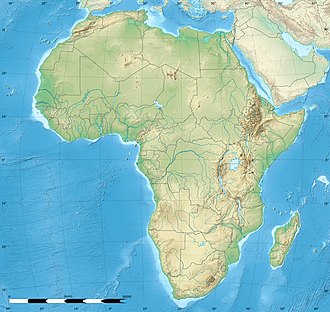| Rebmann Glacier | |
|---|---|
 Rebmann Glacier on the Summit of Mount Kilimanjaro in 2003 | |
| Type | Mountain glacier |
| Location | Mount Kilimanjaro, Tanzania |
| Coordinates | 3°4′52″S37°21′47″E / 3.08111°S 37.36306°E |
| Terminus | Moraine/talus |
| Status | Retreating |
 | |
The Rebmann Glacier is an active glacier located near the summit of Mount Kilimanjaro in Tanzania. It is a small remnant of an enormous ice cap which once crowned Kilimanjaro. This ice cap has retreated significantly over the past century; between 1912 and 2000, 82 percent of the glacial ice on the mountain disappeared. [1]
Rebmann Glacier is named for German missionary and explorer Johann Rebmann, [2] who was the first European explorer to report observations of snow and glaciers atop Kilimanjaro, in 1848. [3]



